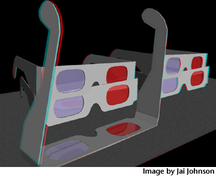Maya cameras have certain advantages over real world cameras, giving you more creative freedom. For example, because Maya cameras are not restricted by size or weight, you can move cameras to any position in your scene, even inside the smallest objects.
Static and animated cameras
Three types of cameras help you create both static and animated scenes:
- Use a Basic camera for static scenes and for simple animations (up, down, side to side, in and out), such as panning out of a scene.
- Use a Camera and Aim camera for slightly more complex animations (along a path, for example), such as a camera that follows the erratic path of a bird.
- Use a Camera, Aim, and Up camera to specify which end of the camera must face upward. This camera is best for complex animations, such as a camera that travels along a looping roller coaster.
See Cameras options for more information.
Stereoscopic Camera
Use stereoscopic cameras to create three dimensional renders with the illusion of a three dimensional depth of field. When rendering a stereoscopic scene, Maya takes into account all of the stereoscopic camera attributes, and performs calculations to produce an anaglyph or parallel image that can be composited by another program.
Camera rigs can also be customized by using MEL or Python scripting or using the Custom Stereo Rig Editor. SeeCustom Stereo Rig Editor to set its options.
You can also create a multi-camera rig of two or more stereo cameras using the Multi-Camera Rig Tool. See Multi-Camera Rig Tool for more information.

Refer to these sections to learn how to: